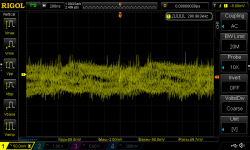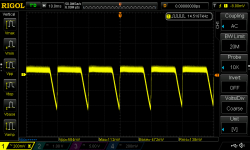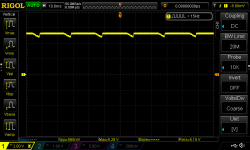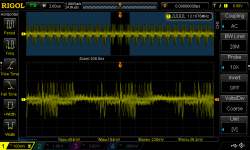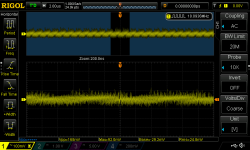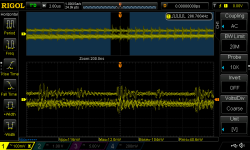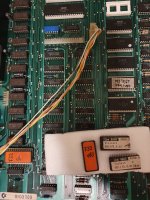Hello community
On the bench this time a CBM / PET 8032 which I got a while ago and decided to give a try.. it's my first PET.
Board version is 8032030, it doesn't boot / chirp and subsequently doesn't show any video.
I cleaned it up and replaced the capacitors that were obviously cracked or leaked their insides. If there are others that must be replaced please let me know...
After that I felt brave enough to turn it on and check for correct voltages. The voltage levels seem fine, but don't look too smooth.
I saw this thread (https://forum.vcfed.org/index.php?threads/pet-4016-transformer-question.1238209/#post-1251726) and followed the steps up to checking the CPU and video chip.
The CPU is alive (I think, at least it goes out of reset) but the video signals look wrong. The only one that looked ok was pin 3 of UC2 (assuming I have a similar board as in the linked thread). Other video signals weren't present or completely off.
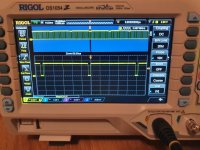
Any idea where to go from here? Also, how do I deal with the unstable 5V? You can see it on the zoomed out waveform.
There are a lot of PET versions out there so it's a bit confusing which guide or manual to follow. Which ICs can I pull and aren't needed for booting the PET? On my board all the 40 pin ICs and ROMs are socketed.
Thanks for your thoughts
On the bench this time a CBM / PET 8032 which I got a while ago and decided to give a try.. it's my first PET.
Board version is 8032030, it doesn't boot / chirp and subsequently doesn't show any video.
I cleaned it up and replaced the capacitors that were obviously cracked or leaked their insides. If there are others that must be replaced please let me know...
After that I felt brave enough to turn it on and check for correct voltages. The voltage levels seem fine, but don't look too smooth.
I saw this thread (https://forum.vcfed.org/index.php?threads/pet-4016-transformer-question.1238209/#post-1251726) and followed the steps up to checking the CPU and video chip.
The CPU is alive (I think, at least it goes out of reset) but the video signals look wrong. The only one that looked ok was pin 3 of UC2 (assuming I have a similar board as in the linked thread). Other video signals weren't present or completely off.

Any idea where to go from here? Also, how do I deal with the unstable 5V? You can see it on the zoomed out waveform.
There are a lot of PET versions out there so it's a bit confusing which guide or manual to follow. Which ICs can I pull and aren't needed for booting the PET? On my board all the 40 pin ICs and ROMs are socketed.
Thanks for your thoughts

